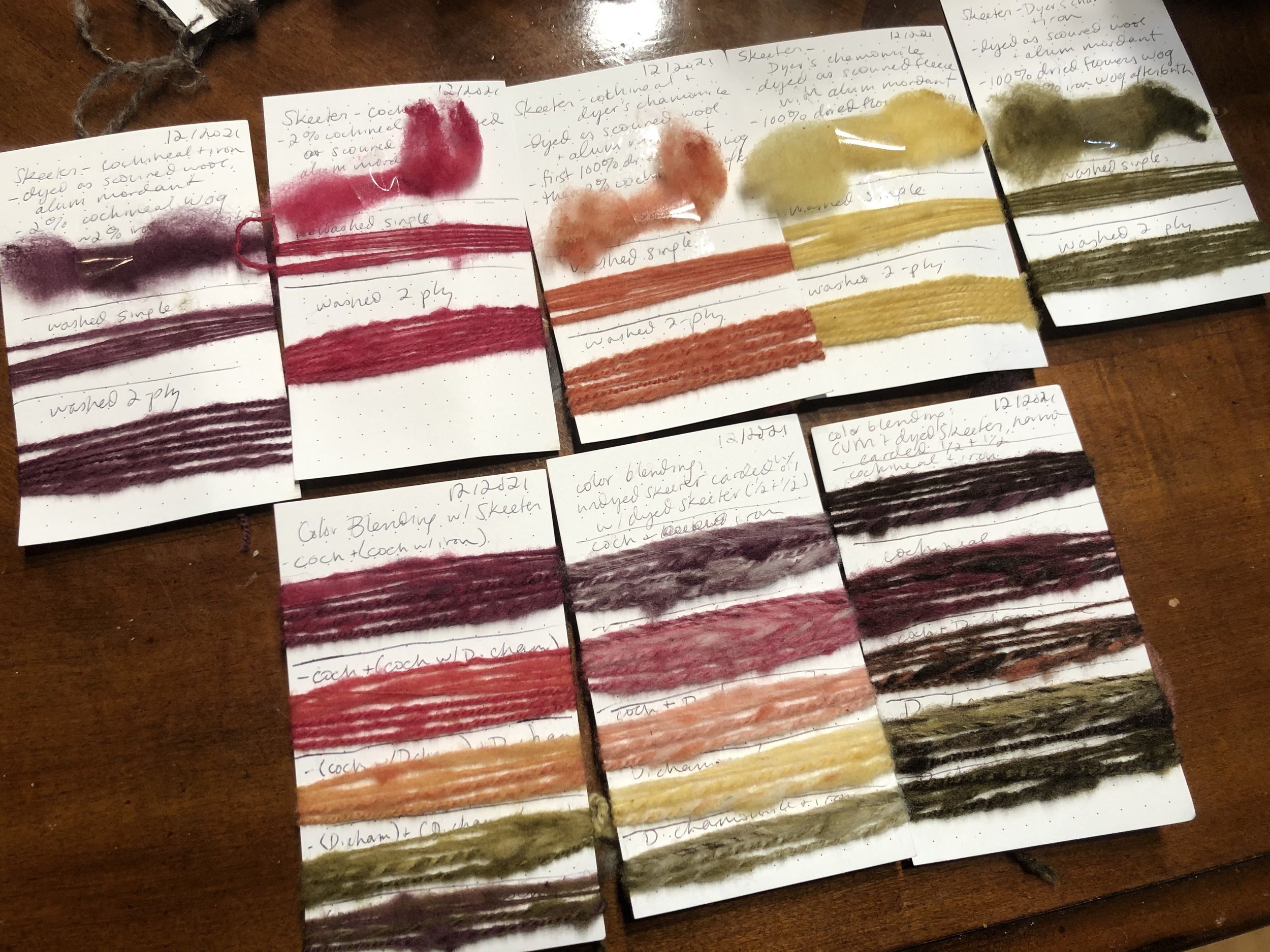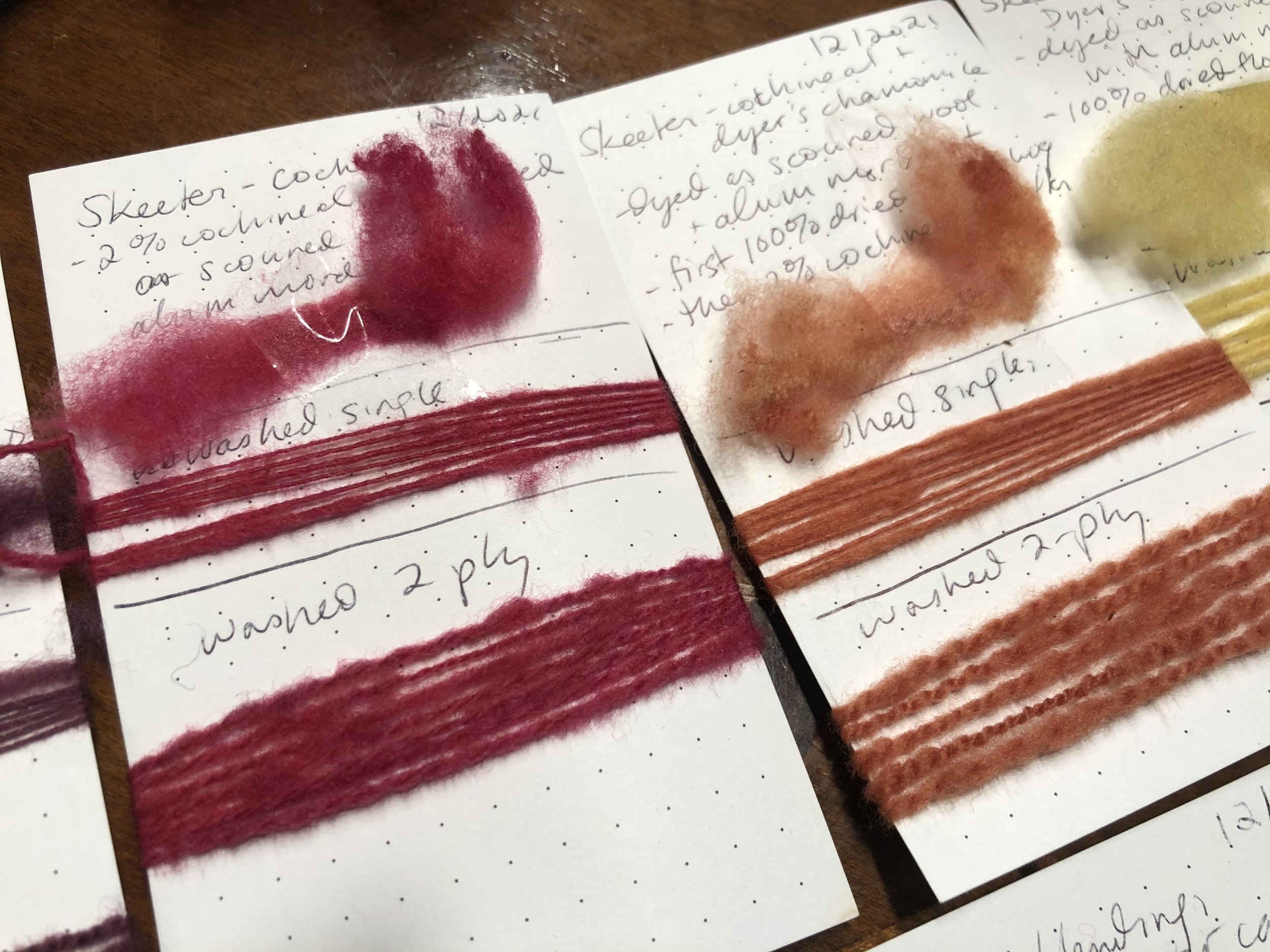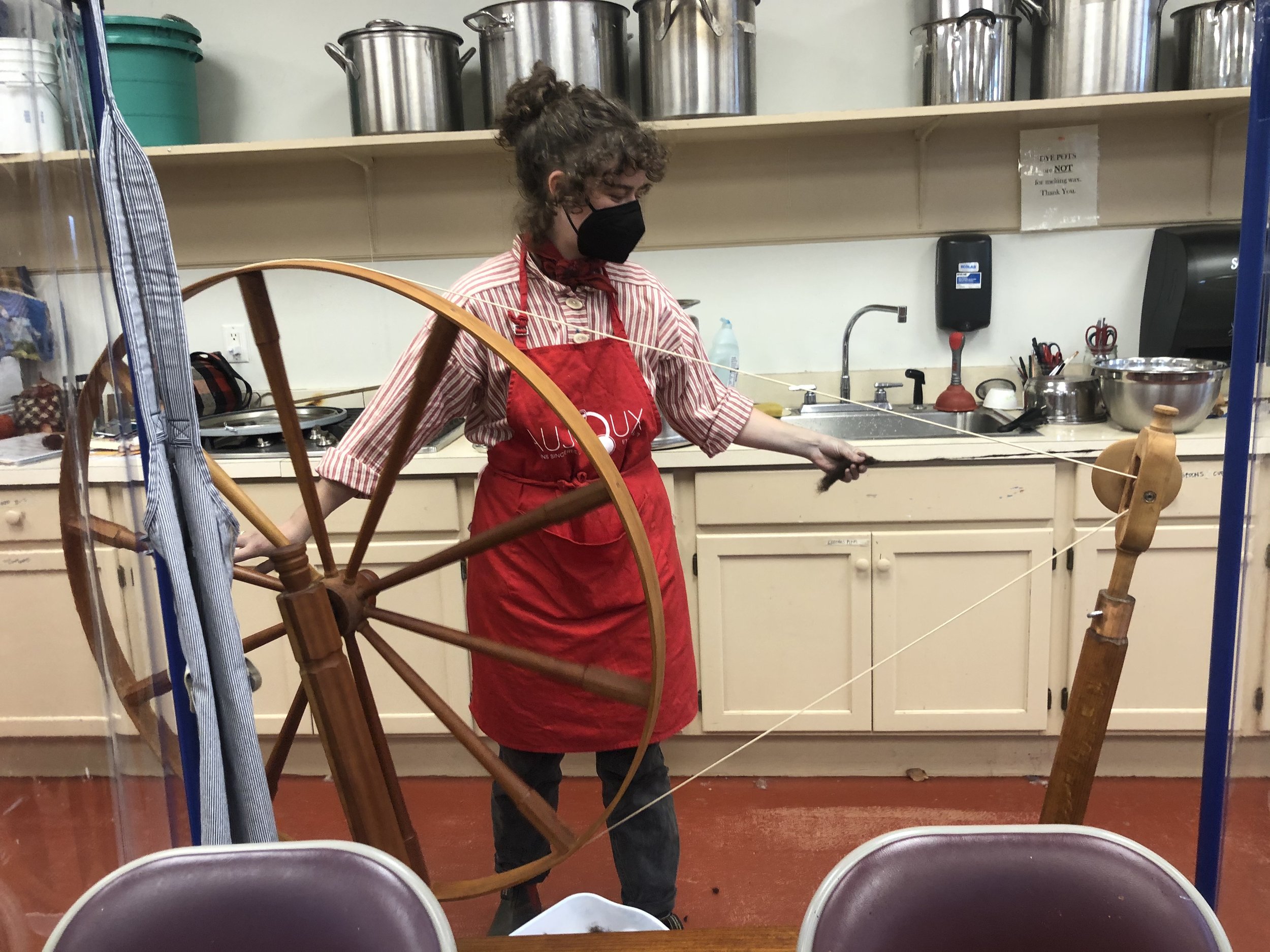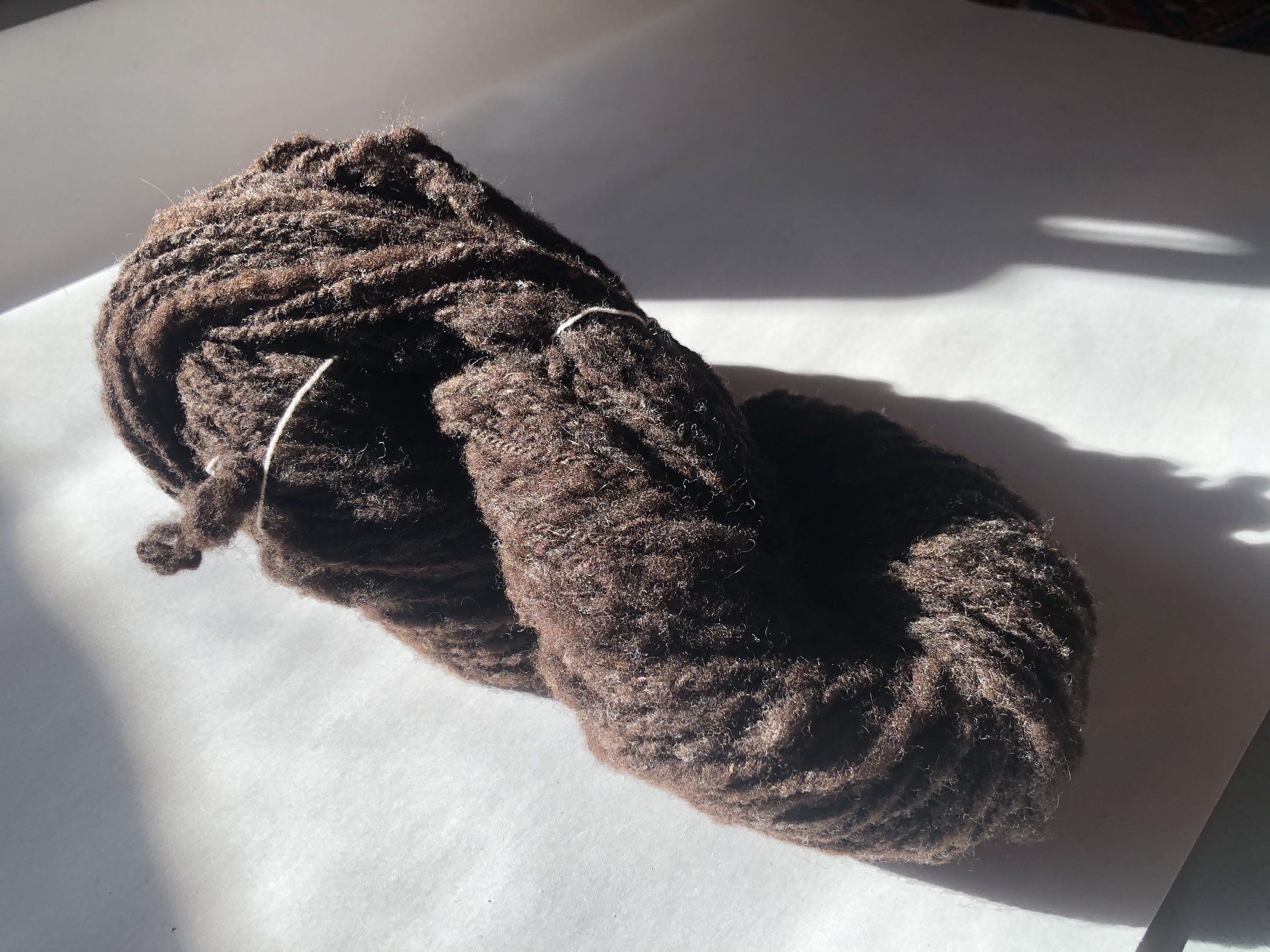Here’s a little recap of the truly delightful Folk School class I was lucky enough to be a part of this month. Taught by Martha Owen and Melissa Weaver Dunning, this class covered wool fiber processing, dyeing, spinning, and a bit of weaving. And singing of course!
We started off the week dyeing some scoured fleece grown by one of Martha’s sheep named Skeeter (who is a Cormo x Corriedale cross). We used only a few dye pots to get all 5 colors at left. First we did 2/5 of the fleece in the cochineal to get magenta and 3/5 of it in dyer’s chamomile to get yellow, then we took 1/3 of that yellow to a cochineal overdye bath to get the orange. Half of the original cochineal fleece and 1/3 of the yellow then went into an iron bath to give us purple from the cochineal and green from the chamomile. These became a fun jumping off point for carding & color blending experiments for me later in the week.
I was really excited to finally FINALLY learn the difference between processing for worsted yarn vs. for woolen yarn. First we covered using combs and how to spin a worsted yarn, and I used the worsted method to spin yarn for a sample warp—my first ever handspun warp! It was only 2.5 yards long and about 90 ends but it was enough to get me started. This was a single and it was super active, but I only had a few ends break during threading where the yarn had become really thin.
We also talked about carding wool to make rolags and methods for spinning woolen yarn. I ended up doing a lot of carding in order to sample blending together the different dyes—here are a few of my sample cards I created. I noted where the fiber started out (ie as scoured fleece), what it was mordanted & dyed with, and I saved a lock of fleece in addition to a sample of a single and 2-ply yarn, because I noticed that the color often looked different once the whole lock of fleece was carded together.
For my weaving project, I chose an eight-thread herringbone draft from Davison after seeing a really lovely natural & blue herringbone piece that Martha brought to class as a sample. I first sett the warp at 25 ends per inch, which gave me the fabric on the left. After fulling this sample I resleyed at 20 epi (right) to get something with a softer hand.
That sample ended up being really lovely after fulling—I want to make myself a whole outfit out of it. I’ve never felt fabric quite like it, maybe because I know how much work went into it. I used up a lot of my tiny natural dyed skeins in this sample and played around with the treadling as well. Weaving with my handspun was a hurdle I had been intimidated to overcome for a long time, and I’m so glad I finally gave it a shot. This little piece of fabric is a sample I’m going to treasure forever! And hopefully look back on after a long time to see how far I’ve come with my spinning.
Another highlight was spinning on the walking wheel. In addition to its speed, I really enjoyed the motions of this type of spinning. I made a nice squishy 2-ply skein from some California Variegated Mutant fleece that I’ll hopefully find a good knitting project for in the future.
As a special treat Martha took us out to see her flock of sheep and meet the ones who grew all that fleece for us. These guys are wearing coats to protect their fleece through the winter and make the post-shearing processing less labor-intensive. Now I’m scheming on how to work sheep into my future too!
It was really special to be able to spend a week connecting with fiber and people together on a deep level and dipping into ancestral skills that I’ve been seeking out for a long time. I learned a lot, and it brought home that doing this work in a community is really what I want to be doing in the future. If this sounds like a dream come true for you like it did for me, Martha & Melissa will be teaching this class at the Folk School next year! And lastly to get a peek at the songs we were singing & stories we got to hear from Martha, their Morning Song performance is below for your viewing pleasure.









